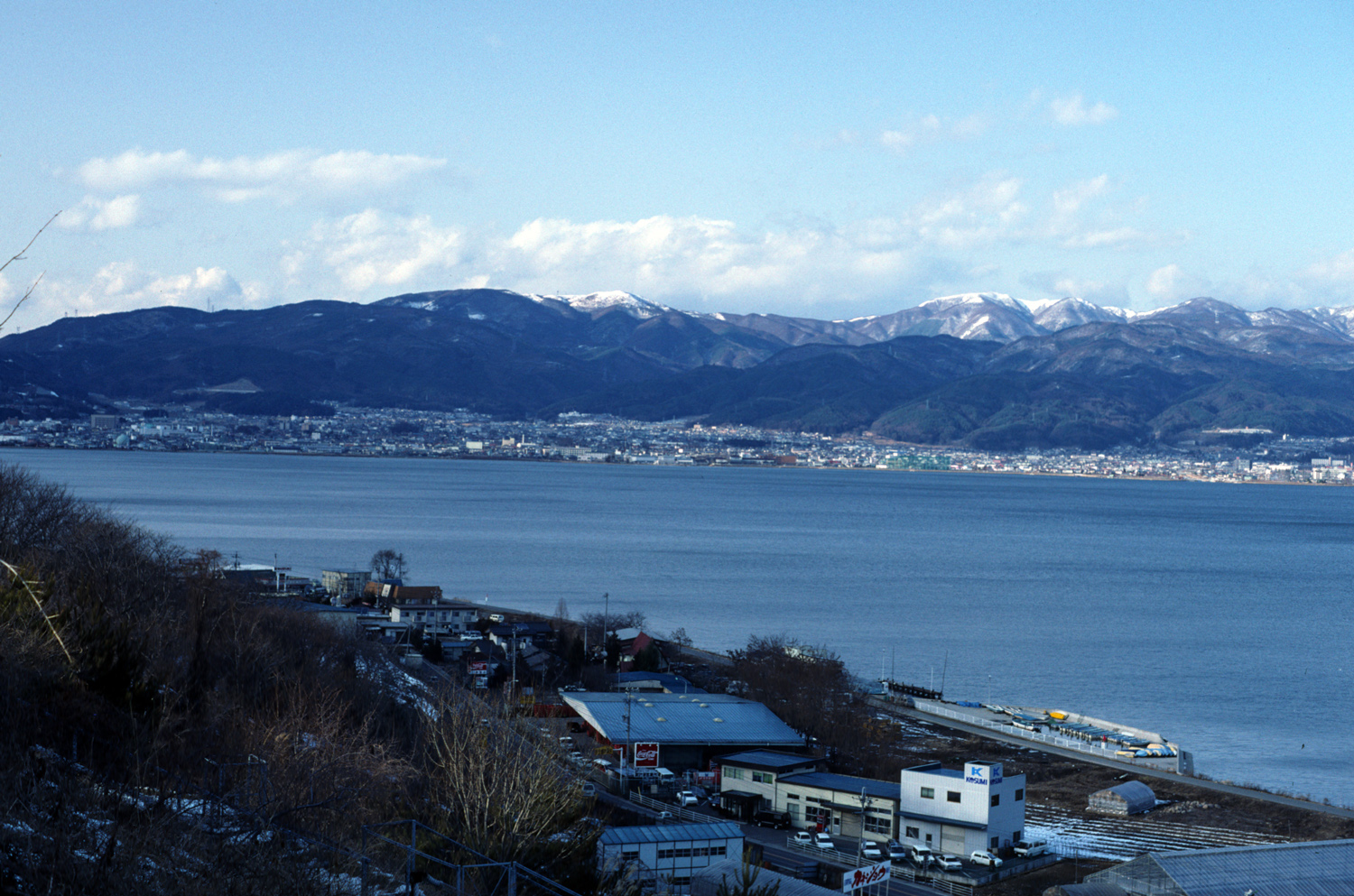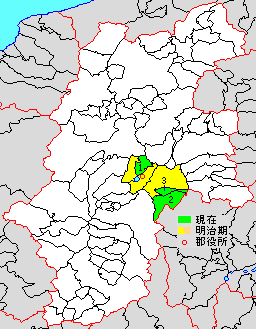|
Shimosuwa-shuku
was the twenty-ninth of the sixty-nine stations of the Nakasendō, as well as being the ending location of the Kōshū Kaidō. It is located in the present-day town of Shimosuwa, Suwa District, Nagano Prefecture, Japan. History First built around 1601, Shimosawa-shuku flourished as a post town because it was located between two difficult mountain passes, Wada Pass and Shiojiri Pass. The town's onsens made it a heavily used rest area.Shimosuwa-shuku Aruki-net . Shimosuwa Chamber of Commerce. Accessed July 16, 2007. It also served as the entrance to the . Records show that in 1843, Shimosuwa-juku had 1,345 residents and 315 buildings. Among the building, there was one '' |
Shiojiri-shuku
was the thirtieth of the sixty-nine stations of the Nakasendō. It is located in the central part of the present-day city of Shiojiri, Nagano Prefecture, Japan. History This area was originally built by Ōkubo Nagayasu in the Keichō era of the early Edo period. There was a shorter route along the Nakasendō that connected Shimosuwa-shuku and Niekawa-juku directly, but the route was changed to include this post town, as well as Seba-juku and Motoyama-juku, after Ōkubo's death. It eventually became the connecting post town between Shimosuwa-shuku and Seba-juku. During its most prosperous period, there were over 70 buildings in the town and it thrived as one of the ''kokudaka'' of the Matsumoto Domain. Because of its size, it was divided into "upper," "central" and "lower" portions.Shiojiri-shuku Machinami . Accessed July 16, 200 ... [...More Info...] [...Related Items...] OR: [Wikipedia] [Google] [Baidu] |
Kōshū Kaidō
The was one of the five routes or major highways of the Edo period. It was built to connect Edo (modern-day Tokyo) with Kai Province in modern-day Yamanashi Prefecture, Japan. The route continues from there to connect with the Nakasendō's Shimosuwa-shuku in Nagano Prefecture.Information on Everyday Living for Foreign Residents of Shinjuku City . Shinjuku City Office. Accessed November 28, 2007. Many feudal lords from made use of the road during '''', including those ... [...More Info...] [...Related Items...] OR: [Wikipedia] [Google] [Baidu] |
Shimosuwa, Nagano
is a Towns of Japan, town located in Nagano Prefecture, Japan. , the town had an estimated population of 20,055 in 8864 households, and a population density of 300 persons per km2. The total area of the town is . Geography Shimosuwa is located in central Nagano Prefecture, approximately 50 kilometers from the prefectural capital of Nagano city and 200 kilometers from Tokyo. The town is bordered on the south by Lake Suwa. The town has an altitude of 760 meters at the town center, and is 82% forested. Surrounding municipalities *Nagano Prefecture ** Matsumoto, Nagano, Matsumoto ** Nagawa, Nagano, Nagawa ** Okaya, Nagano, Okaya ** Suwa, Nagano, Suwa Climate The town has a humid continental climate characterized by warm and humid summers, and cold winters (Köppen climate classification ''Dfb''). The average annual temperature in Shimosuwa is 7.3 °C. The average annual rainfall is 1540 mm with September as the wettest month. The temperatures are highest on average in Au ... [...More Info...] [...Related Items...] OR: [Wikipedia] [Google] [Baidu] |
Wada-shuku
Hiroshige's print of Wada-shuku, part of the series ''The Sixty-nine Stations of the Kiso Kaidō'' was the twenty-eighth of the 69 Stations of the Nakasendō, sixty-nine stations of the Nakasendō highway connecting Edo with Kyoto during the Edo period. It was located in the present-day town of Nagawa, in the Chiisagata District of Nagano Prefecture, Japan. History Located at an elevation of , at the entrance to the Wada Pass, which was considered one of the most difficult portions of the highway because of its steepness. Because Shimosuwa-juku, the next post station, was over away, Wada-shuku flourished with over 150 buildings to accommodate all of the travelers and their pack animals. Wada-shuku was approximately 49 ''ri'', 24 chō from the starting point of the Nakasendō at Nihonbashi, or about 195 kilometers. Per an 1843 guidebook issued by the , the town had one ''honjin'', two''waki-honjin,'' and 28 ''hatago'', with a total resident population of 522 people. Most of ... [...More Info...] [...Related Items...] OR: [Wikipedia] [Google] [Baidu] |
69 Stations Of The Nakasendō
69 may refer to: * 69 (number) * A year, primarily 69 BC, AD 69, 1969, or 2069 *69 (sex position) * 69 Hesperia, a main-belt asteroid Arts and media Music * ''69'', a 1988 album by A.R. Kane * 69", a song by Deep Purple from ''Abandon'' * Major 6 add 9, a jazz chord * "Summer of '69", a song by Bryan Adams * 6ix9ine, also known as Tekashi69, American rapper * ''Day69'', album by 6ix9ine * "69", a song by T-Pain from his 2007 album '' Epiphany'' * ''Six/Nine'', a 1995 album by Buck-Tick Other media * ''69'', a novel by Ryu Murakami * ''69'', a 2004 film based on the Murakami novel Other uses * Lake 69, a small lake in the region of Áncash, Peru * *69, the Last Call Return feature code in the US and Canada * List of highways numbered 69 ** Texas State Highway 112, formerly designated as State Highway 69 * ♋️, the symbol for the astrological sign Cancer * British Rail Class 69, a class of locomotive converted from the ageing British Rail Class 56 The British Rail C ... [...More Info...] [...Related Items...] OR: [Wikipedia] [Google] [Baidu] |
Nakasendō
The , also called the ,Richard Lane, ''Images from the Floating World'' (1978) Chartwell, Secaucus ; pg. 285 was one of the centrally administered Edo Five Routes, five routes of the Edo period, and one of the two that connected the ''de facto'' capital of Japan at Edo (modern-day Tokyo) to Kyoto. There were 69 Stations of the Nakasendō, 69 stations (staging-posts) between Edo and Kyoto, crossing through Musashi Province, Musashi, Kōzuke Province, Kōzuke, Shinano Province, Shinano, Mino Province, Mino and Ōmi Province, Ōmi Old provinces of Japan, provinces.Nakasendou Jouhou . NEC Corporation. Retrieved August 18, 2007. In addition to Tokyo and Kyoto, the Nakasendō runs through the modern-day prefectures of Saitama Prefecture, Saitama, Gunma Prefecture, Gunma, Nagano Prefecture, Nagano, Gifu Prefecture, Gifu and Shiga Prefect ... [...More Info...] [...Related Items...] OR: [Wikipedia] [Google] [Baidu] |
Suwa District, Nagano
is a district located in southern Nagano Prefecture, Japan. As of 2003, the district has an estimated population of 46,162 with a density of 181.18 persons per km2. The total area is 254.79 km2. Municipalities The district consists of two towns and one village: * Fujimi * Hara * Shimosuwa ;Notes: History * January 4, 1879 - Suwa District was created during the early Meiji period The was an era of Japanese history that extended from October 23, 1868, to July 30, 1912. The Meiji era was the first half of the Empire of Japan, when the Japanese people moved from being an isolated feudal society at risk of colonizatio ... establishment of the municipalities system, which initially consisted of 24 villages. Its district headquarters was located at the village of Kamisuwa. District Timeline Districts in Nagano Prefecture {{Nagano-geo-stub ... [...More Info...] [...Related Items...] OR: [Wikipedia] [Google] [Baidu] |
Nagano Prefecture
is a Landlocked country, landlocked Prefectures of Japan, prefecture of Japan located in the Chūbu region of Honshu. Nagano Prefecture has a population of 2,007,682 () and has a geographic area of . Nagano Prefecture borders Niigata Prefecture to the north, Gunma Prefecture to the northeast, Saitama Prefecture to the east, Yamanashi Prefecture to the southeast, Shizuoka Prefecture and Aichi Prefecture to the south, and Gifu Prefecture and Toyama Prefecture to the west. Nagano (city), Nagano is the capital and largest city of Nagano Prefecture, with other major cities including Matsumoto, Nagano, Matsumoto, Ueda, Nagano, Ueda, and Iida, Nagano, Iida. Nagano Prefecture has impressive highland areas of the Japanese Alps, including most of the Hida Mountains, Kiso Mountains, and Akaishi Mountains which extend into the neighbouring prefectures. The area's mountain ranges, natural scenery, and history has gained Nagano Prefecture international recognition as a winter sports tourist de ... [...More Info...] [...Related Items...] OR: [Wikipedia] [Google] [Baidu] |
Japan
Japan is an island country in East Asia. Located in the Pacific Ocean off the northeast coast of the Asia, Asian mainland, it is bordered on the west by the Sea of Japan and extends from the Sea of Okhotsk in the north to the East China Sea in the south. The Japanese archipelago consists of four major islands—Hokkaido, Honshu, Shikoku, and Kyushu—and List of islands of Japan, thousands of smaller islands, covering . Japan has a population of over 123 million as of 2025, making it the List of countries and dependencies by population, eleventh-most populous country. The capital of Japan and List of cities in Japan, its largest city is Tokyo; the Greater Tokyo Area is the List of largest cities, largest metropolitan area in the world, with more than 37 million inhabitants as of 2024. Japan is divided into 47 Prefectures of Japan, administrative prefectures and List of regions of Japan, eight traditional regions. About three-quarters of Geography of Japan, the countr ... [...More Info...] [...Related Items...] OR: [Wikipedia] [Google] [Baidu] |
Onsen
In Japan, are hot springs and the bathing facilities and Ryokan (inn), traditional inns around them. There are approximately 25,000 hot spring sources throughout Japan, and approximately 3,000 ''onsen'' establishments use naturally hot water from these Geothermal gradient, geothermally heated springs. ''Onsen'' may be either or . Traditionally, ''onsen'' were located outdoors, although many inns have now built indoor bathing facilities as well. Nowadays, as most households have their baths, the number of traditional public baths has decreased, but the number and popularity of have increased since the end of World War II, Second World War. Baths may be either publicly run by a municipality or privately, often connecting to a lodging establishment such as a hotel, ''Ryokan (inn), ryokan'', or ''Ryokan (inn)#Minshuku, minshuku''. The presence of an ''onsen'' is often indicated on signs and maps by the symbol ♨, the kanji (''yu'', meaning "hot water"), or the simpler phonet ... [...More Info...] [...Related Items...] OR: [Wikipedia] [Google] [Baidu] |




